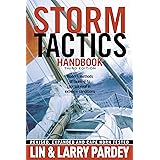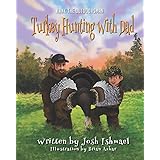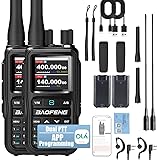The TPS Arms Scout: An Unmatched Survival Firearm for Your Emergency Kit
Considering the essential tools for short-term wilderness survival, have you ever wondered what firearm truly offers the versatility and reliability needed to secure small game efficiently? Dave Canterbury, in the video above, delves into the specifics of a top contender: the TPS Arms Scout, a modern iteration of the revered M6 Scout.
This discussion focuses not on a home defense weapon or a long-term homestead firearm, but specifically on a lightweight, compact option ideal for short-term survival scenarios. This distinction is crucial, as the criteria for a “survival firearm” can vary widely depending on the intended application and environment, such as the Eastern Woodlands where Dave’s expertise is centered.
Contextualizing the Short-Term Survival Firearm
A survival firearm, in this context, is primarily designed for procuring small game over a limited duration. It is envisioned as a lightweight addition to your kit, easily transported in a canoe, kayak, ATV, or vehicle. The emphasis is on practicality for short-term emergencies rather than extensive defensive capabilities.
This perspective helps clarify why certain firearms, like an AR with thousands of rounds or a .308, are not typically considered for this specific role. The choice of a firearm is intrinsically linked to your environment, local game availability, and the specific survival situation you anticipate.
The Enduring Legacy of the M6 Scout Clone
Dave Canterbury has a long history with the M6 Scout platform, utilizing versions of it since approximately 2008 and featuring it in videos from 2009-2010. The original M6 Scout, designed as a pilot survival rifle, was known for its robust construction and dual-caliber capability, typically chambered in .22 Hornet over .410 or .22 Long Rifle over .410.
The TPS Arms Scout continues this legacy, offering enhanced versatility for today’s survivalists. This particular M6 Scout clone is highlighted as one of Dave’s personal favorites due to its practical design and multifaceted utility.
Unpacking the Versatility of the TPS Arms Scout
The TPS Arms Scout is celebrated for its impressive caliber versatility. While Dave’s specific model is chambered in .357 Magnum over .410, which also fires .38 Special, other variants are available.
These include .22 Long Rifle/.410, .22 WMR/.410, .17 HMR, and even a .410 over .410 option. This wide range ensures that a model can be selected to best suit individual needs and local game. The .357 Magnum variant, in particular, offers significant power for larger small game or even medium-sized threats, while the .410 shotgun barrel provides excellent utility for various targets.
Key Features for Short-Term Survival
Several design elements make the TPS Arms Scout a strong candidate for a survival firearm:
- Breakdown Capability: The firearm easily breaks down into two flat pieces by pushing out a central pin, making it highly packable in a backpack or strapped to its side. This significantly reduces its footprint, an essential aspect for those prioritizing compact gear.
- Robust Construction: Weighing in at approximately six pounds or more, this firearm is almost entirely constructed from steel, excluding the butt plate cover and the inner core of the skeleton stock. This heavy-duty build ensures durability in harsh wilderness conditions.
- Dual Sighting System: It features a V-sight for shotgun use, which can be popped up to a peep sight for more precise rifle aiming. This dual system adapts quickly to different targeting needs.
- Quick Follow-Up Shots: Unlike a true single-shot firearm, the Scout allows for rapid switching between barrels. A simple push-pull mechanism on the hammer enables a swift follow-up shot, offering a distinct advantage in dynamic hunting situations.
- Integrated Safety Mechanism: The safety button, identifiable by its red and black indicators, prevents the hammer from being cocked when engaged. It must be in the “fire” position to cock the hammer, after which it can be returned to safe, ensuring an added layer of security.
- Glove-Friendly Trigger: A paddle-style trigger is incorporated, making it easy to operate even when wearing gloves. This practical feature is invaluable in cold weather or when dexterity is compromised.
- Ammunition Storage: The stock of the gun itself doubles as an ammunition storage compartment. This specific setup, as demonstrated, can hold seven .357 Magnums (or .38 Special) and five .410 #6 small game loads.
Multi-Caliber Mastery: Adapting for Any Situation
A standout feature of Dave’s customized TPS Arms Scout is its ability to fire multiple calibers beyond its primary two. By utilizing a 3-inch rifled .410 adapter for .22 Long Rifle, sourced from companies like Short Lane Arms, the firearm’s utility is dramatically expanded.
This adapter, combined with a small waterproof bag containing ten .22 Long Rifle rounds stored in the stock, allows the firearm to effectively shoot four different calibers: .357 Magnum, .38 Special, .410, and .22 Long Rifle. This adaptability ensures that the survivalist is prepared for various game sizes and situations, making it a highly efficient tool in a diverse environment like the Eastern Woodlands.
Advantages and Considerations for the Survivalist
The TPS Arms Scout presents numerous advantages for short-term survival scenarios:
- Larger Caliber Capability: The .357 Magnum barrel provides ample power for medium-sized game, offering a significant advantage over smaller calibers.
- Shotgun Versatility: The .410 shotgun barrel is critically important in survival settings. It offers a larger margin for error, which can be invaluable when vision is impaired (e.g., needing reading glasses), fatigue sets in, or precise aiming is difficult. A shotgun increases the likelihood of a successful shot on small game.
- .22 Long Rifle for Small Game: Even with a 3-inch rifled adapter, the .22 Long Rifle is accurate enough for close-range shots (approximately 15 yards and in). It is also highly effective for dispatching injured animals with minimal noise and ammunition cost.
- Sling Compatibility: Unlike some other compact survival firearms, the TPS Arms Scout comes with sling studs. This allows for easy attachment of a sling, enabling comfortable hands-free carry once the firearm is assembled at a base camp.
- Modularity: The ability to store the firearm in a gun sleeve (especially an adjustable one) or break it down for backpack carry offers superior modularity for diverse transport needs.
However, some considerations are also noted:
- Cost: The TPS Arms Scout typically costs double that of a Henry AR7. While this is a significant difference, its enhanced capabilities are often seen as justifying the price.
- Weight: At over six pounds, it is heavier than both the AR7 and most single-shot firearms like the Stevens 301. For extreme ultralight backpacking, this weight might be a factor, though its durability often offsets this.
- Accuracy at Distance: The shorter barrel may lead to reduced accuracy at longer distances compared to dedicated hunting rifles. However, in a short-term survival context, long-range shots are generally avoided due to the increased risk of misses.
Optimizing Your Carry for Wilderness Preparedness
The design of the TPS Arms Scout is highly conducive to various carry methods, adapting to the needs of the survivalist. When broken down, its flat components fit seamlessly into a backpack, preserving valuable space. Alternatively, when assembled, it can be carried comfortably with a sling, allowing for quick access and reducing fatigue during extended treks through the wilderness.
Its compatibility with adjustable gun sleeves further enhances its utility, providing an additional layer of protection and an alternative carry option for those who prefer to keep their firearm assembled. This flexibility in carry, coupled with its inherent robustness, solidifies the TPS Arms Scout’s position as a premier option for anyone prioritizing self-reliance and preparedness in the wild.











